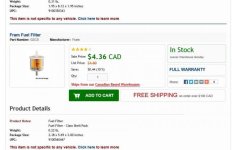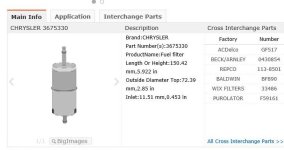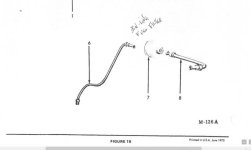michael.stinson
New member
So here I am again asking for more help. I am working on a 1980 Silverton 31 Sedan bridge with twin Chrysler 318's. The previous owner shopped at auto parts stores for his replacement parts. He has Fram FG28 inline fuel filters between the fuel pump and the carb. I had wanted to replace them, not knowing how old they may be, so I went to Intercoastal Marine in Middle River to get replacements. They had only one Fram FG28, but had another make that looked identical, thread and fitting and all. However the non Fram filter, which the previous owner also had several of in his parts bin will not seat properly and leaks no matter what I do to properly seat the fitting.
1) What filter is supposed to be there?
2) As it is a secondary filter in the system is it really needed?
3) Any idea where I can get the proper filters?
4) If it should be the Fram FG28, since they are so difficult to locate, would it be advisable to just change the fuel lines and put in fittings that will properly seat with readily available filters in the market?
1) What filter is supposed to be there?
2) As it is a secondary filter in the system is it really needed?
3) Any idea where I can get the proper filters?
4) If it should be the Fram FG28, since they are so difficult to locate, would it be advisable to just change the fuel lines and put in fittings that will properly seat with readily available filters in the market?




